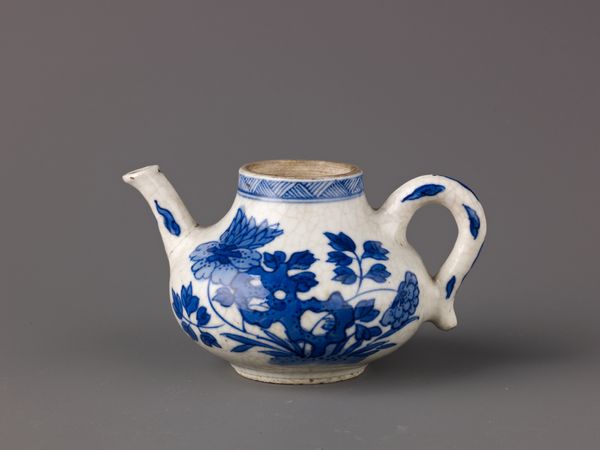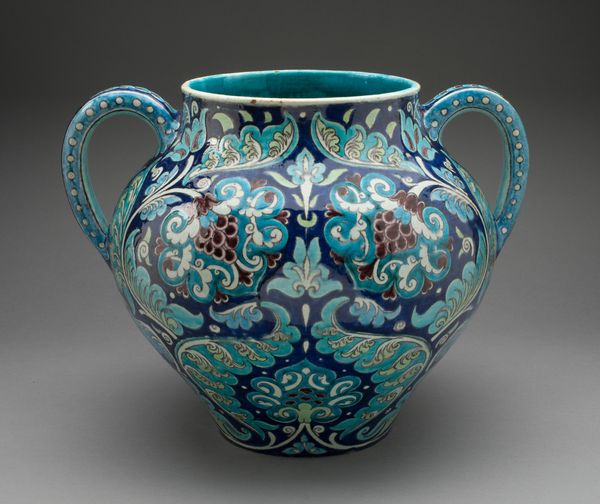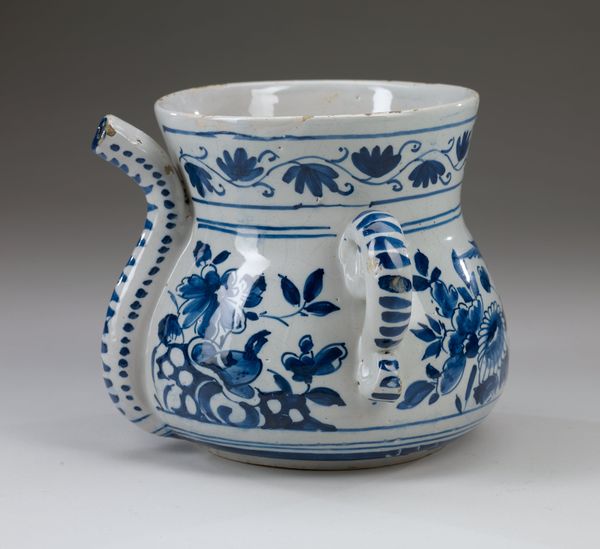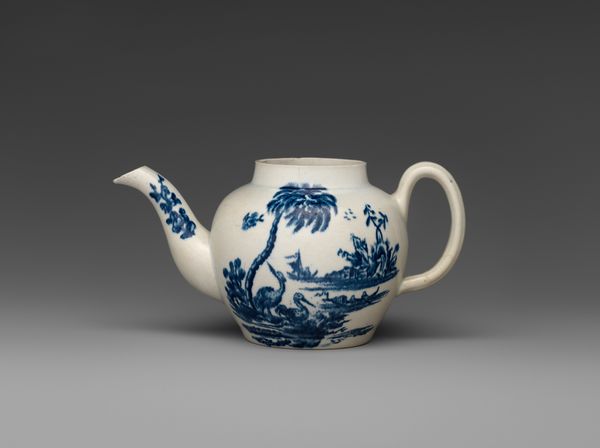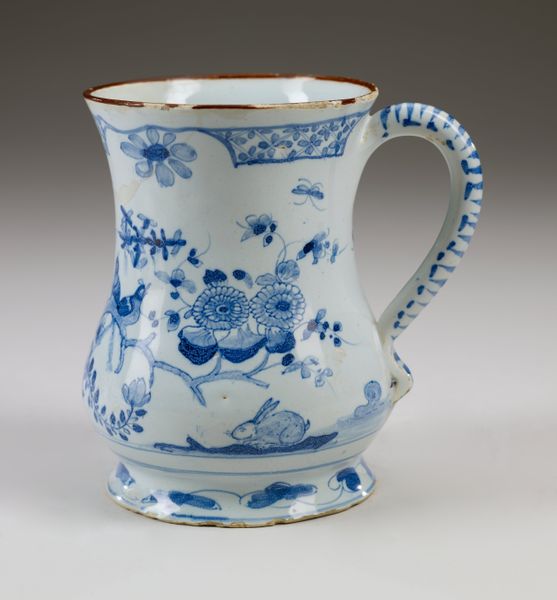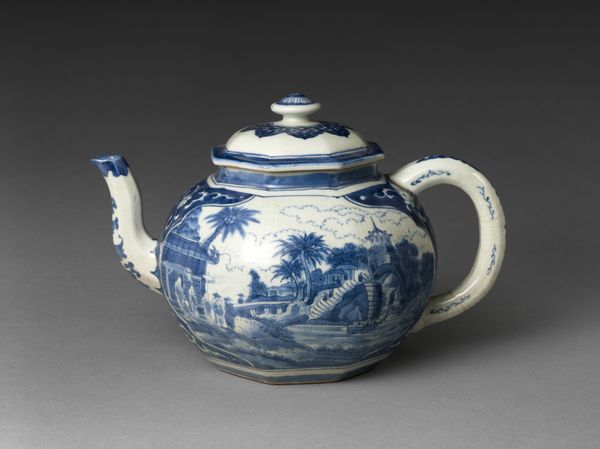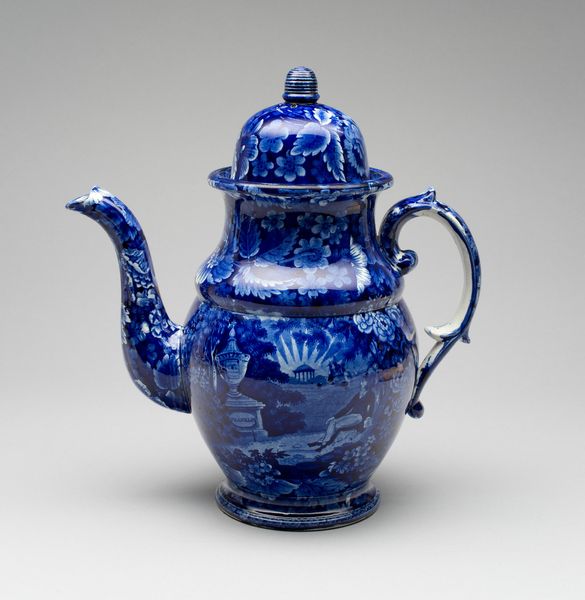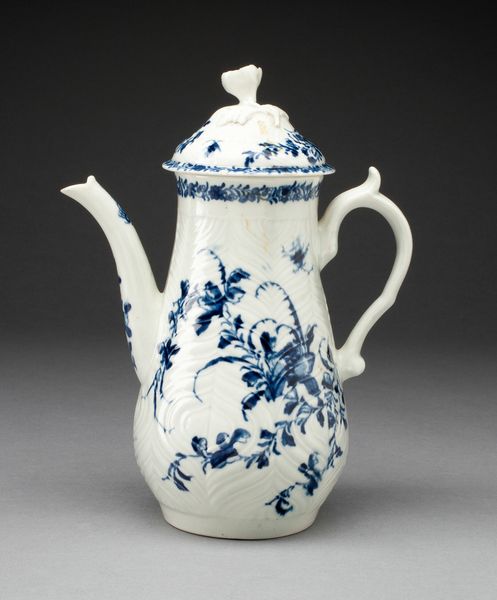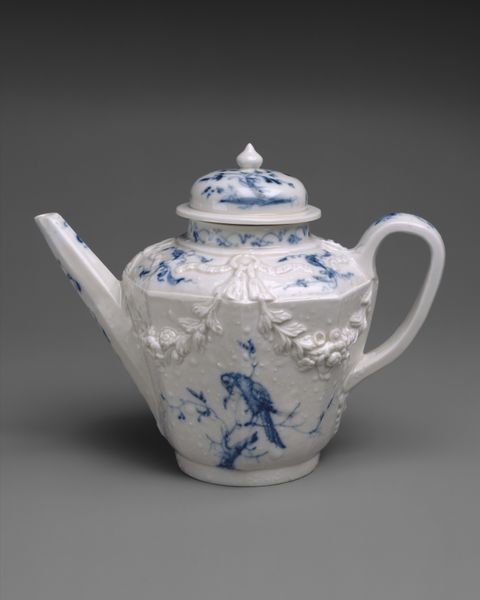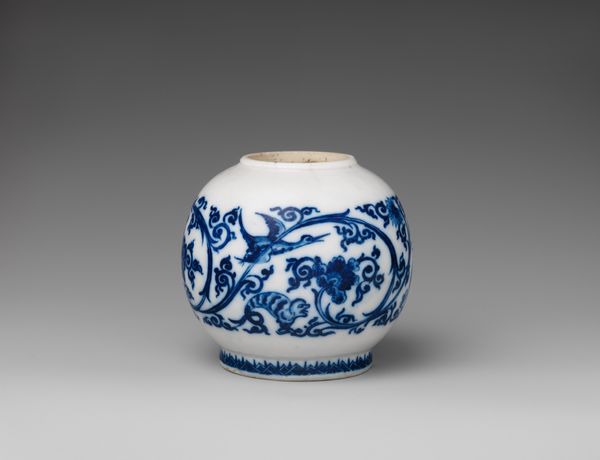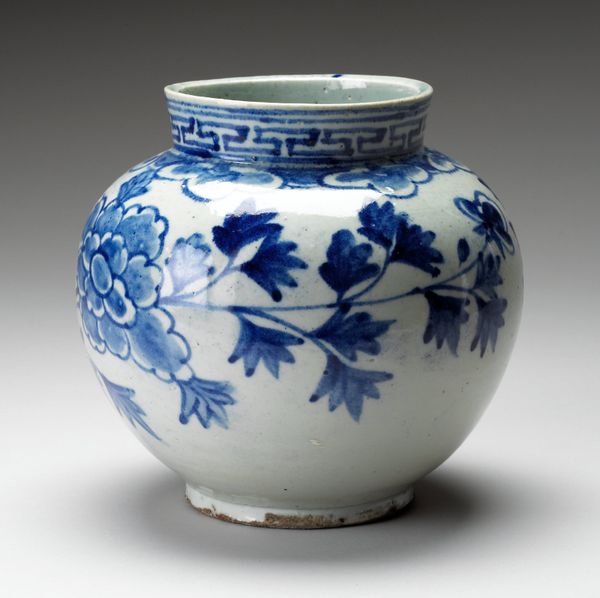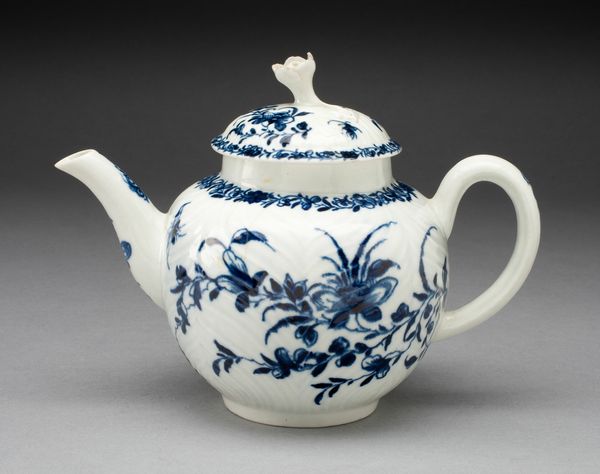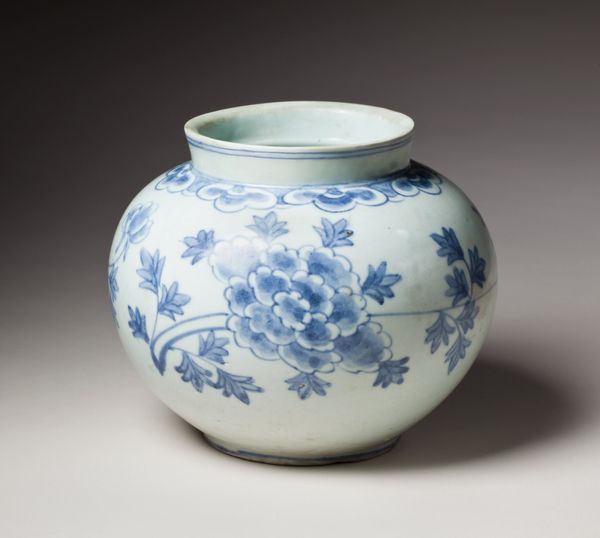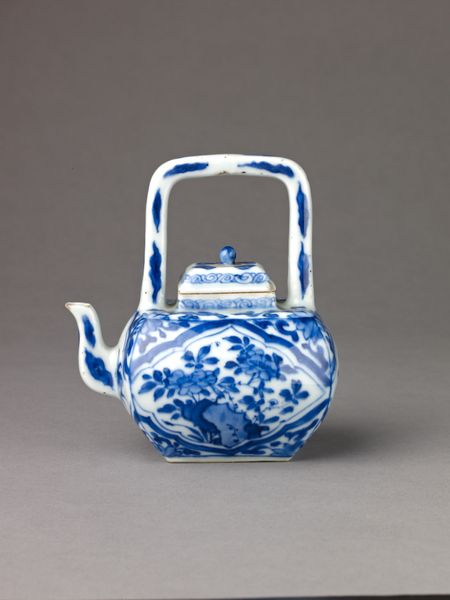
ceramic, earthenware
#
ceramic
#
earthenware
#
abstraction
#
islamic-art
#
decorative-art
Dimensions: overall (height to rim): 12.7 cm (5 in.)
Copyright: National Gallery of Art: CC0 1.0
Editor: Here we have a flask crafted after 1575 by the Medici Porcelain Factory. It’s made of ceramic earthenware and adorned with decorative floral designs. The blue on white gives it such a clean, crisp feel. What stands out to you most about this piece? Curator: This piece invites us to consider cultural exchange and power dynamics. The Medici Porcelain Factory, backed by the grand dukes of Tuscany, attempted to emulate the highly coveted porcelain of Ming China. It becomes less about pure aesthetics, and more about what this imitation tells us. What does it mean for a European power to so overtly seek to reproduce an object from a culture it simultaneously sought to dominate through trade and, indeed, religious proselytization? Editor: So, it's about more than just liking the pretty blue and white? Curator: Exactly. It’s a complex story of appropriation, desire, and technological ambition. Think about the labour involved, the resources poured into mimicking Chinese porcelain production…it reflects a European fascination, but also, I would argue, anxiety about being perceived as less sophisticated. The “Islamic art” tag is also interesting. What do you make of that, considering the European context? Editor: I guess, I see it suggesting that maybe the decorations also came through trade routes from the East? Curator: Precisely! It also forces us to consider the very construction of the term "Islamic art." The exchange of ideas through trade wasn’t just a horizontal, equal process. It was enmeshed with colonial ambition and evangelism. Considering these complicated narratives enhances our viewing of the object, and ultimately, reveals some complex histories. Editor: I never would have looked at a pretty vase and thought about colonialism! Curator: It's a crucial part of how we view art now, and especially, understand decorative arts. Thank you for bringing this object into view today, it reminds us how important art can be to sparking questions about power and history.
Comments
No comments
Be the first to comment and join the conversation on the ultimate creative platform.
